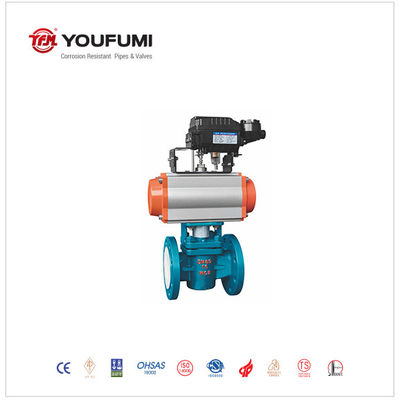Standard Lockable Wrenches Allows valve to be locking in open or closed position.
Dynamic, Self-adjusting, Self Energizing PFA or TFM reverse lip diaphragm.
Compare lining methods
There are two ways to line valves, molding and forming. The lining method depends upon the lining material used.
PFA is melt processible. This means that it can be precisely molded to the valve body and locked into place. Locking is
accomplished by molding the lining into dovetail recesses or grooves in the valve body. The locking resists liner collapse.
PTFE. Because of the limitations involved in conforming PTFE to the shape of the valve passage way, it is more vulnerable to
failure. PTFE is not melt processible. It does not become molten at elevated temperatures. Consequently, it cannot be molded
in the same way as PFA. As a valve liner, PTFE is limited to the blow-molding method. With blow-molding, PTFE cannot be
“locked” into the valve body. PTFE is susceptible to separation from the valve body in several ways including blow-out, collapse,
and creep.
Compare porosity
In PTFE, microscopic pores are present due to imperfect particle fusion during processing. To compensate for PTFE’s greater
porosity, thicker linings must be applied. Because of PTFE’s greater lining thickness, the lining is less flexible and sealing is less
reliable. More flexible, less porous PFA linings assure better sealing. Picture proof. The scanning electron microscope
fractographs above illustrate the difference in valve lining materials. PFA at 10,000X PTFE. In the photo at the left above, PTFE
is magnified just 2,000 times. The PTFE microscopic fissures are large enough to easily allow a wide variety of media to
migrate through to the base metal. PFA In the photo at the right above, PFA is enlarged to 10,000X. This is five times greater
magnification than the PTFE, yet no fissures are visible.


![]()
![]()
![]()
![]()
![]()